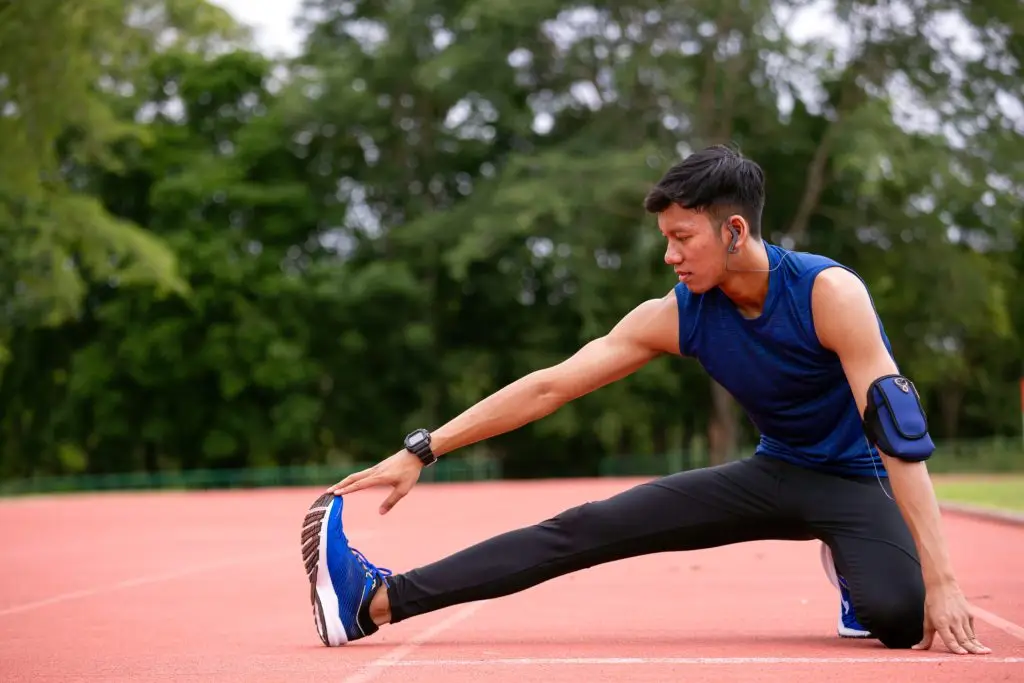Running is a great way to connect with your body and enjoy good weather that’s as simple as lacing up a pair of shoes. But running can also be the source of soreness, stiffness, and pain that affects you long after you wind down from the workout.
Whether you’re an occasional jogger or training for your next marathon, incorporating a thoughtful stretching routine after running is essential for recovering quickly, maintaining performance, and preventing injury. With the right routine, runs will continue giving you the many benefits of exercise with a lower risk of injury or pain.
Why stretch after running?
Stretching after running is an essential part of the process for your overall well-being. Your muscles are plenty resilient to handle the increased work of running, but stopping cold can be overly difficult to recover from the exertion properly. Here’s why stretching is worth your time, and not just because it might make you more flexible in the long run.
Boost your recovery
Running, especially longer distances or sprints, places stress on your muscles. Stretching elongates these stressed muscles, helping them relax and recover post-run. This can minimize post-run stiffness and soreness, allowing you to keep living your normal life without struggling up the stairs for two days after a run.
Reduce injury risk
Consistent post-run stretching maintains your muscles’ range of motion as they constrict after being worked, which keeps them better prepared for future exercises. Tight, overworked muscles are more prone to strains and injuries—stretching helps mitigate this risk.
Improve circulation
Stretching may promote continued blood flow through your muscles after a run, which aids in delivering nutrients and oxygen to the areas that need it most. Think of it as a way to feed and refresh your muscles after they’ve worked hard.
Enhance relaxation
Post-run stretches can activate your parasympathetic nervous system, otherwise known as your body’s “rest and digest” mode. This helps lower your heart rate, ease your breathing, and provide an overall sense of calm after an intense workout.
Types of stretches after running
Not everyone knows there’s two types of stretching that may make your runs easier, whether you incorporate them before or after setting out each day.
Dynamic stretching
Dynamic stretching involves active, controlled movements that gently take your muscles and joints through their full range of motion. Though not typically part of a post-run routine, dynamic stretches are essential before running as part of your warm-up. They increase blood flow, warm up your muscles, and prep your body to move efficiently and reduce the risk of injury.
Examples include leg swings, walking lunges, and arm circles.
Static stretching
Static stretching is what most people think of when they picture stretching. Static stretches work by putting your body in a static position to gently lengthen a muscle. Research into the efficacy of static stretching, especially for high-performance athletes, has been mixed, but the recent consensus is that any negative effects are minimal and the positive ones worthwhile.
Guidelines for stretching after running
Every person and everyone’s goals from running are different, which means no two stretching routines will or should look the same. That said, as you stretch during warm-ups and after runs, we can recommend a few science-backed tips.
- Hold each stretch for 15-30 seconds, but no longer.
- Breathe deeply and slowly. Slowing your breath helps you recover after exertion, and “breathing into” each stretch can help you identify your range of motion.
- Don’t push yourself to the point of pain. Stretching shouldn’t hurt. If it does, talk to a physical therapist or athletic trainer.
- Incorporate PNF stretching for better range of motion over time. This stretching technique involves contracting and relaxing your muscles in addition to holding them in stretched positions. For example, while performing a quadricep stretch, push against your hand as you’re holding your foot for a few seconds, then release and deepen the stretch.
- Stay consistent with your exercise routine; to see the benefits of both running and stretching, you’ll need to do it frequently and without weeks of inactivity in between workouts.
Expert running and injury prevention advice by SOL PTs
If you’re already a runner but have concerns about chronic pain or discomfort, stretching might help, but talking to a physical therapist is a more effective way to get answers and a plan for treatment. Our physical therapists are active runners and athletes, which means they know first-hand what kind of issues you might be dealing with and can take both the personal experience and clinical expertise into creating your personalized injury prevention plan.
Keep loving the run and protect your health and mobility by starting a conversation with our team today. You can reach us by calling one of our clinics or by contacting us online.

